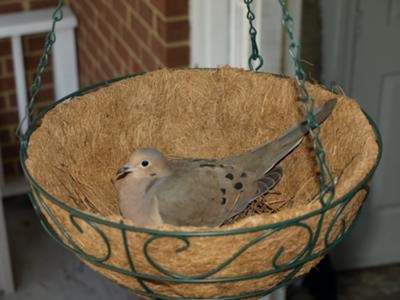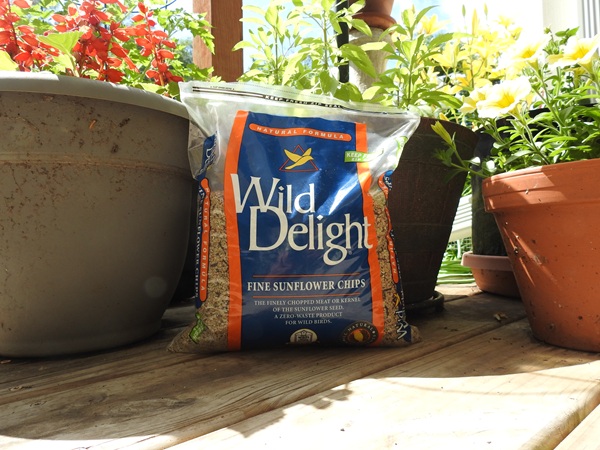Most Recent Coments First
Costa's Hummingbird - Purple Beauty of the High Desert
by C. Thill
(High Desert Mtns. Calif. USA)
Cindy gives us a brief outline of a hummingbird many of us don't get to see, the Costa's Hummingbird. She shares her first-hand experience and personal photos of this amazing bird.
The Costa's hummingbird is one of our smallest hummingbirds. These high desert hummingbirds are here in So. Calif. through almost all seasons and are a real delight to see.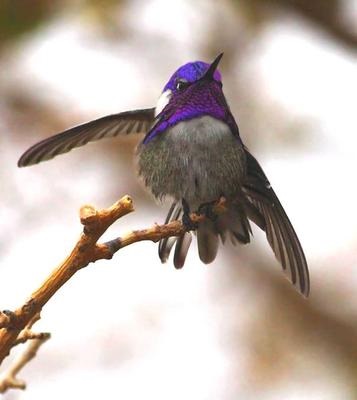
Costa's Hummingbird Showing His Purple
Their preferred habitat is the desert scrub of Arizona-California.
Temperatures routinely reach 104 degrees and often enough get up to 118 degrees and even these desert hummingbirds don't like that.
The Costa's hummingbirds get around this by nesting in late winter and early spring, avoiding the heat of summer.
The earliest nesting was recorded in November but the normal breeding season for the Costa's is February - April.
I read recently that they build their "nest only 3 to 6 feet off the ground. I wonder how many are destroyed by predators.
Bonding with Costa's Hummingbirds
I've had the pleasure of befriending a few of these beautiful little powerhouses! Yes... befriending!!
The Costa's (to me at least.. is one of the friendliest towards people that I've come across so far.. with the exception of the Black-chinned Hummingbird. Both have been very friendly.)
Seasonal and Resident Hummingbirds
That being said, I encounter seasonal hummingbirds at my location.
These include the Rufous, the Anna's, along with the Calliope, every year in my yard.
The Black-chinned and the Costa's seem to be here all year, but seen more towards the end of fall into the winter.
These beautiful little trusting friends get so excited when I present fresh nectar that they don't wait for me to hang it back in the tree.
Hummingbird Feeding Rituals and Interactions
Instead, they land on the feeder as I am holding it trying to take it to its hanging place!
When their feeder is empty and they see me, they will fly around me and hover in front of me, then zip away and back again and land close to their feeding post!
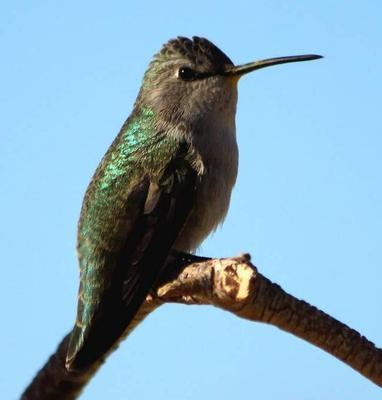
Female Costa's
That's how I know the feeder is empty!
I never fill it very full as it can go bad easily and fast if hanging too long without other hummers or seasonal visitors such as the Orioles, the Ladder-backed Woodpecker, the Verdin, and even some of the warblers that inspect the feeders.
The House Finches, occasionally in the summer, get smart and know that if they land on the feeder and hop around or flutter, some will leak out and they sip it up. That doesn't happen all too often.
It is amazing to see these territorial little jets,(hummingbirds) buzz around them with their amazing aerobatics as a scare tactic to chase them away.
But they aren't always successful and a few of the larger birds that visit the nectar feeders will sit gently unaffected and allow the little hummers to land and join in.
It's an amazing sight, to see our smallest little birds sized to other birds! With the exception of the Verdin, and some of the warblers, they aren't much bigger!!
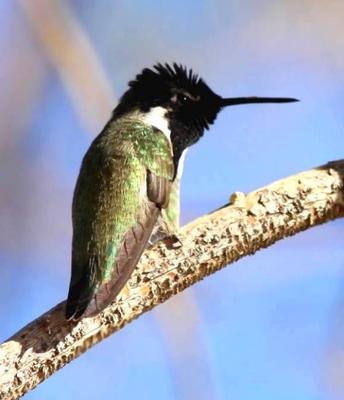
Male Costa's
It truly is a wonderful treat and experience. I believe we also help those older hummers that are seasonal but can no longer make their journey, by keeping up with the nectar feeders, all year round!
It's truly a blessing to watch these little ones at play, in courtship, relaxed.. YES RELAXED.. ha ha..nap and groom themselves!
Keep up the backyard birding!
C. Thill



